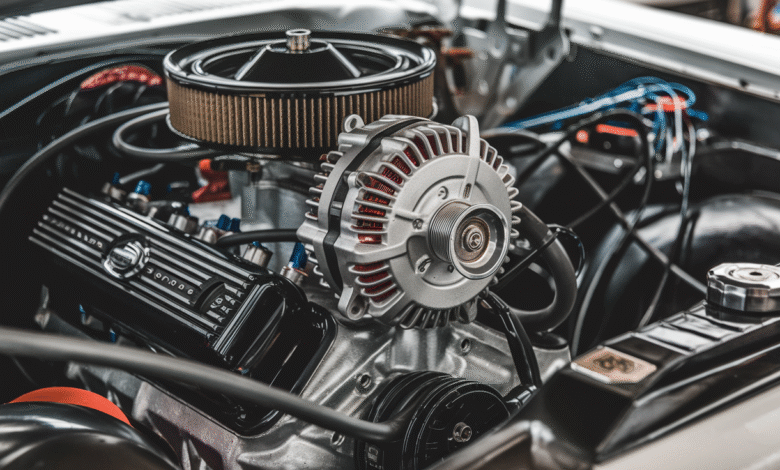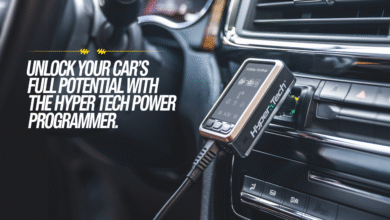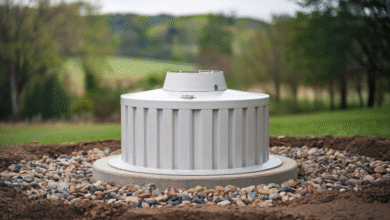Why a 1 Wire Alternator Might Be the Easiest Upgrade for Your Classic Car

A 1 wire alternator is one of the easiest upgrades you can do for your old car or truck. Many people love a 1 wire alternator because it is so simple to install. You do not need lots of wires or confusing parts. Just one big wire connects to your battery or starter solenoid, and that is it! This makes it a popular choice for people who are fixing up classic Mustangs, old trucks, hot rods, or even tractors. If your old alternator is giving you trouble, a 1 wire alternator can solve many problems fast. It can help charge your battery better, make your lights brighter, and give you peace of mind when you drive your classic ride at night. Many people like a clean engine bay too, and this upgrade makes that easy because there is less wiring to hide.
When you choose a 1 wire alternator, you get a clean look and simple setup, but you should still know a few things before you swap out your old alternator. Some people do not like 1 wire alternators because they do not have remote voltage sensing like a 3-wire type. That means sometimes your battery may not charge as well if your wires are old or long. Also, some 1 wire alternators need you to rev your engine a bit after starting so they “wake up” and start charging. This is not a big deal, but you should know it before you buy one. In this post, I will share what a 1 wire alternator is, how it works, how to wire it safely, and what problems you might see. I will also help you pick the right size wire and fuse, and I will share tips so you can get the most power and longest life from your new alternator. Let’s get started and see if a 1 wire alternator is the perfect upgrade for you!
What Is a 1 Wire Alternator? Simple Explained for Classic Cars
A 1 wire alternator is a type of alternator that is super easy to use in old cars. It only needs one wire to work, which makes it really simple for beginners. Many people with old Mustangs, trucks, or hot rods like to use a 1 wire alternator because it removes lots of extra wires. This helps keep the engine area neat and tidy. When you start your car, the 1 wire alternator turns on by itself and starts charging your battery. It is good for people who do not want to mess with lots of wiring. If you want to replace your old alternator fast, a 1 wire alternator is a smart choice that many people trust.
How a 1 Wire Alternator Works Under the Hood
A 1 wire alternator works by using just one big wire to charge your battery. When your engine starts, the alternator spins and makes power. This power goes through the single wire to the battery to keep it full. Some 1 wire alternators need you to rev the engine a little bit to wake them up. After that, they keep charging all the time when your motor is running. It does not need a switch wire or extra plug like old factory alternators. This makes it simple for people who want less trouble. Under the hood, the alternator is grounded by the metal bracket, so you do not always need a ground wire.
Why Choose a 1 Wire Alternator for Vintage Builds?
Many people pick a 1 wire alternator for old cars because it makes life easy. Vintage cars can have old wiring that is messy or broken. By using a 1 wire alternator, you skip the mess and just run one thick wire to the battery or solenoid. It works well for hot rods, classic Mustangs, or trucks that do not have big power needs. If you like a clean engine bay, this helps too. Some people say 1 wire is not perfect because it does not sense battery power far away, but for most weekend cars, it is just fine. It is a smart upgrade if you want less hassle.
Step-By-Step Guide: How to Install a 1 Wire Alternator
Installing a 1 wire alternator is easy if you take your time. First, remove your old alternator and unplug the wires. Next, mount your new 1 wire alternator in the same spot. Make sure the pulley lines up with your belt. Use a strong bracket and bolts to keep it tight. Then, run one big wire from the alternator’s power stud to your battery’s positive side or the starter solenoid. You can add a fuse for safety. Double-check your belt tension so it does not squeal. Start the car and give it a little gas to wake up the alternator. That’s it!
Best Wiring Tips for a 1 Wire Alternator (Keep It Safe!)
When wiring your 1 wire alternator, always use a thick wire that can handle the amps. A wire that is too small can get hot and be unsafe. Most people use a wire that is like a battery cable, not a skinny wire. Run the wire in a safe place so it does not rub on sharp parts. Many people add a fuse or mega fuse near the battery end for extra safety. If your alternator has a ground stud, it is smart to use it and run a wire to the engine block. This helps the alternator work better and last longer.
Common Problems with a 1 Wire Alternator and How to Fix Them
Some people have problems with a 1 wire alternator not charging. This can happen if you do not rev the engine high enough to wake it up. Just give the motor a little gas and check if the volts go up. Another problem is poor grounding. If your bracket is rusty, clean it and maybe add a ground wire. Also, check your big wire for tight ends and no breaks. If your battery still goes dead, make sure the belt is tight and not slipping. Simple checks like this can fix most small troubles fast and easy.
1 Wire Alternator vs 3 Wire Alternator: Which Is Better?
A 1 wire alternator is easy to hook up and makes your car look neat. A 3 wire alternator has more wires but can sense battery power better. This helps charge the battery just right. Many old cars do fine with a 1 wire alternator because they do not have big electric needs. If you run a loud stereo or big fans, a 3 wire might be better. But for most weekend drivers, a 1 wire is good enough. It is all about what you want: easy setup or best charging power. Pick what works best for your ride.
Do You Need a Ground Wire for a 1 Wire Alternator?
Most 1 wire alternators ground through the metal bracket that bolts to the engine. This is enough for many cars. But some people add a ground wire for extra safety. If your bracket has rust or paint, the ground might not be strong. A simple wire from the alternator’s ground bolt to the engine block makes sure power flows well. This can help the alternator last longer and charge better. It only takes a few minutes to add and costs almost nothing. Many builders say a good ground is always smart, even if the manual does not say so.
Where to Connect the Main Wire on a 1 Wire Alternator
The main wire on a 1 wire alternator goes from the big stud on the back to the battery’s positive post or the starter solenoid’s battery side. Some people pick the solenoid because it is closer and keeps the wire short. A shorter wire loses less power. Use strong wire ends and tight bolts so the wire does not come loose. Always run the wire away from hot parts like headers. Many people add a fuse near the battery for extra safety. This wire is the only wire you really need, so make sure it is good!
Top Safety Tips for Running a 1 Wire Alternator on Your Classic Car
To run a 1 wire alternator safely, always use good parts. Use a thick wire, tight connections, and a strong fuse. Keep the wire away from hot or sharp spots under the hood. Check your brackets and bolts so the alternator does not shake loose. Make sure the belt is tight so it does not slip or squeal. Start the car and rev it a bit to make sure the alternator wakes up and works right. If you see flickering lights or a dead battery, check wires and grounds first. Safe wiring keeps you and your car happy.
Conclusion
Now you know why a 1 wire alternator is so easy to use. Many old car owners love how simple it is to hook up and how clean it makes the engine look. If you want less work and a fast upgrade, this is a smart choice for you. Just follow good tips and stay safe.
Remember, always check your wire, grounds, and belt. If you do this, your new 1 wire alternator will charge strong for many years. I hope this guide helps you fix up your classic car with less stress. Have fun working on your ride and enjoy driving it too!
FAQs
Q: Can I run a 1 wire alternator without a fuse?
A: It is better to use a fuse for safety. A fuse protects your car if the wire shorts out.
Q: Do I need to rev my car to make a 1 wire alternator work?
A: Yes, many need a little rev to wake up and start charging.
Q: Is a 1 wire alternator good for daily driving?
A: It is fine for most classic cars used on weekends or light driving.
Q: Can I use my old wires with a 1 wire alternator?
A: It is best to use a new thick wire for better power and safety.
Q: Does a 1 wire alternator drain my battery when off?
A: No, when wired right, it does not drain your battery when the car is off.



